California Proposition 65 sets substance restrictions and warning labeling requirements for products sold in California. You must either ensure that the product does not contain restricted substances above the set limits or affix a warning label informing consumers of potentially harmful substance contents.
This guide lists examples of product categories covered by California Proposition 65 and examples of restricted substances that may be present in such products.
Methodology
This guide is primarily based on products that are mentioned on www.p65warnings.ca.gov. The website contains:
a. Fact sheets covering specific product categories (e.g., “motor vehicle parts”), or;
b. Fact sheets covering specific substances (e.g., lead and lead compounds), which, in turn, provide examples of products that may contain restricted substances (e.g., ceramic dishes)
Note that these are not necessarily all products covered by California Proposition 65. Our understanding is that there is no definitive product list. Instead, California Proposition 65 is concerned with substances, rather than specific products. That being said, this guide can still help you form a clear understanding of which products are subject to California Proposition 65 and their respective substance risks.
Content Overview

FREE CONSULTATION CALL (US, EU & UK)
- Request a free 30-minute call with Ivan Malloci to learn how we can help you with:
- Find product requirements
- Certification and labeling
- Lab testing
How do I know if a product is covered by California Proposition 65?
California Proposition 65 is primarily concerned with restricting chemicals rather than listing specific products. As such, products are covered to the extent that they may contain substances restricted under California Proposition 65. This, in turn, depends on the materials.
Our recommendation is that you work with a qualified testing company to determine if:
a. Your products and materials are likely to contain substances restricted by California Proposition 65
b. If yes, determine which substances to test for
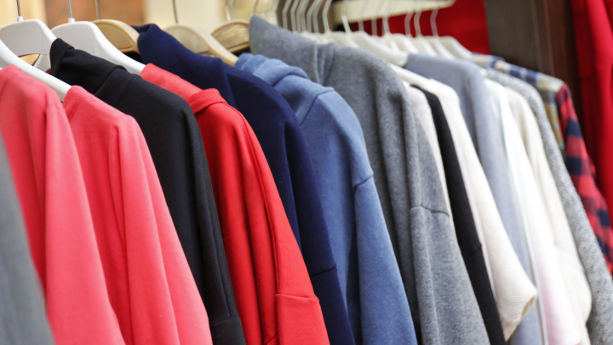
Food Contact Materials
The OEHHA lists several substances that may be present in food contact materials. Here are some of those substances, which could potentially cause harm to consumers:
Examples
Here are several food contact materials that may contain lead and lead compounds:
- Ceramic dishes
- Pewters
- Brass faucets and fittings
The California Proposition 65 website lists several consumer food contact materials that may contain phthalates:
- Plastic lunchboxes
- Plastic food packaging materials
BPA may be found in several consumer food contact materials, such as:
- Jar lids
- Baby bottles
- Sippy cups
It may also be found in other products, such as pacifiers.
Apparel and Textiles
Some chemical substances restricted under California Proposition 65 (e.g., flame retardants or formaldehyde) can be found in apparel and textile products. Flame retardants (e.g. PFOA) are often used in textile products to lessen the chances of them catching fire.
Formaldehyde is a gas that may be released into the air from various sources, such as permanent press fabrics. It is often used during the manufacturing of textiles and their accessories.
Examples
Products that may contain flame retardants, formaldehyde, or other restricted substances include:
- Textiles
- Outdoor gear
- Carpets
- Rugs
- Camping tents
- Linens
- Upholstery
- Draperies
Jewelry and Accessories
California Proposition 65 regulates the amount of heavy metals and other substances contained in jewelry. One of the most notable chemical elements that are used during the manufacturing process of jewelry is cadmium, which is often added to jewelry to impart specific technical and functional attributes to the metals.
Cadmium is commonly found in zinc ore, which increases the likelihood of low-cost zinc alloy jewelry being non-compliant with California Proposition 65.
Other than cadmium, the following toxic heavy metals are often found in the making of jewelry, which is restricted by California Proposition 65:
- Lead
- Antimony
- Chromium
Examples
Cadmium is often used in jewelry to provide a shiny aspect to the coating and weight to products such as:
- Zinc alloy jewelry
- Other metal jewelry
- Charms on children’s jewelry
Lead is a substance used in many jewelry products to increase their weight and brightness, or soften plastic parts. This includes:
- Imitation leather (which may include leather jewelry)
- Costume jewelry
Watches
The California Proposition 65 website does not explicitly list watches, to our knowledge. However, it is important to note that Proposition 65 does cover many materials and substances, such as lead and phthalates, that may be used to manufacture watch components such as the watch case or strap.
Examples
Here are some examples of products that contain materials that may include substances restricted by California Proposition 65:
- Watches with leather straps
- Watches with plastic straps
Toys
Toxic chemicals, such as flame retardant chemicals and phthalates, could sometimes be found in the coatings of plastic toys. Such substances are restricted by California Proposition 65 in the use of consumer products, including toys.
Other than toys that are made of plastic, toys that contain materials such as plush, fabric, wood, or ceramic could contain restricted toxic substances under the regulation of California Proposition 65.
Further, DEHP and other phthalates can sometimes be found in coatings applied to toy materials or laminations. As such, the base material used to make toys is not the only concern.
Examples
Toys that may contain the abovementioned chemicals and substances include items such as the following:
- Teddy bears
- Wooden toy cars
- Pretend tea sets
- Rubber ducks
- Toy surface coatings
- Toy paints
- Laminations
Other children’s products
Other children’s products (not toys) can contain substances on the California Proposition 65 list, such as antimony trioxide, TDCPP, and many more. For example, childcare products may contain the following phthalates:
a. DIDP
- Restricted to 0.1%
- Maximum Allowable Dose Level (MADL) of 2200 µg/day
b. DINP
- Restricted to 0.1%
- No Significant Risk Level (NSRL) of 146 µg/day.
Examples
Children’s products that may contain restricted substances and chemicals include items such as:
- Strollers
- Booster seats
- Bassinets
- Infant carriers
- Playpens
- Children’s books
- Pacififers
- Baby bottles
Furniture
Newly purchased furniture may release emissions that contain harmful chemical substances such as formaldehyde, benzene, and other volatile organic gases. Fire retardants are also very commonly detected in various kinds of sofas and other types of furniture, which can cause health issues such as liver cancer, kidney cancer, and reproductive and developmental issues to the users.
Examples
Furniture products may contain chemicals regulated by California Proposition 65. Examples of furniture materials that could contain these chemicals include:
- Textiles
- Vinyl textiles on cushions and upholstery
Formaldehyde, for example, can be found in resins used to make adhesives for composite wood products for furniture. This includes:
- Particleboard
- Fiberboard
- Plywood
Electronics
Toxic chemical substances and heavy metals that can be found within electronic products (or their casing) and are restricted include lead, PBDE, and cadmium.
Examples
PBDE is a flame retardant that may be found in the plastics used with electronic and electrical devices, such as personal computers.
Cadmium and its compounds can be found in many electrical products, such as rechargeable nickel-cadmium (NiCad) batteries. Products that use NiCad batteries include items such as the following:
- Cameras
- Cell phones
- Electric cars
Household appliances
The usage of household appliances may result in the emission of substances such as benzene, carbon monoxide, or formaldehyde. Also, the plastic components of household appliances may even contain various types of phthalates and flame retardants. California Proposition 65 restricts the use of those substances.
Examples
Here are some examples of household appliances that may contain or emit the substances listed on the California Proposition 65 List:
- Ranges
- Dryers
- Hot water heaters
Footwear
California Proposition 65 restricts various listed substances and chemicals, including chloroprene, BBP, and DEHP, which may be found in footwear products.
Examples
Footwear products that may contain chemicals and substances listed on the California Proposition 65 List include, but are not limited to:
- Shoes
- Leather footwear
- Rainwear
E-cigarettes
E-cigarettes discharge a vapor that typically contains nicotine. California Proposition 65 covers nicotine because it may cause birth defects or some form of reproductive harm. Some e-cigarettes also emit other substances such as lead and cadmium, which are also covered by the proposition.
Additionally, e-cigarettes are electronic devices as they use batteries to either:
a. Heat an e-liquid (a liquid solution inside the device), or
b. Heat solid substances (e.g., nicotine salts)
The components of e-cigarettes may also contain chemicals and substances restricted by California Proposition 65, such as phthalates.
Examples
Examples of e-cigarettes include items such as the following:
- E-cigars
- E-pipes
- E-hookahs
- Vape pens
Cosmetic Products
Cosmetic products often contain heavy metals such as lead and other dangerous substances.
These substances can cause harm to the skin, brain, and nervous system, and even cancer. As such, they are under the purview of California Proposition 65.
Examples
Lead can be found in cosmetics, such as the following:
- Kohl
- Surma
- Hair dyes
Personal Care Products
Personal care products may also contain chemicals and substances featured on the California Proposition 65 List, such as benzophenone, cocamide DEA, DBP, and 1,4-dioxane.
Examples
Here are some examples of personal care products that may contain substances listed on the California Proposition 65 List:
- Shampoo
- Conditioner
- Bath oil
- Body wash
Medical Equipment
Medical equipment may also contain substances that are restricted by California Proposition 65.
For example, mercury can be found in dental amalgam fillings, which is a material used during a medical dental procedure. Mercury exposure can result in childhood behavioral problems.
California Proposition 65 also restricts the use of different types of phthalates in medical devices because they can cause reproductive harm:
- BBP
- DBP
- DEHP
- DIDP
- DINP
- DnHP
Examples
Here we list some examples of medical equipment that may contain chemicals or substances covered by California Proposition 65:
- Surgical gloves
- Oxygen masks
- Feeding tubes
- Tubing for dialysis
- Some types of blood and IV bags
Gym Equipment
California Proposition 65 restricts many substances and chemicals, such as chlorinated tris and other flame retardants, which may be contained in gym equipment components such as textiles, plastics, and polyurethane foam.
Examples
Flame retardants such as chlorinated tris and other restricted substances may be found in items such as gym equipment that contains foam.
Motor Vehicle Parts
Components of, and used in, motor vehicles may have substances and chemicals that are restricted by California Proposition 65, such as automobile upholstery.
For example, motor vehicle parts may contain chemicals and substances such as DEHP, lead and lead compounds, and phthalates.
Examples
Here are some examples of products that may contain one or more of the above-mentioned substances:
- Lead-acid batteries
- Floor mats
- Seat covers
- Brake pads
Building Materials
Building materials may often contain chemicals and substances such as formaldehyde, styrene, and flame retardants, among other chemicals, which are restricted by California Proposition 65.
Examples
Building materials that may contain various chemicals and substances include items such as:
- Building insulation
- Plumbing pipes
- Insulated panels
- Rubber flooring
- Foam and fiberglass insulation
Food
A wide range of food products may contain chemicals and substances that are regulated by California Proposition 65. For instance, food may contain substances such as the following:
- Acrylamide
- Inorganic Arsenic
- Mercury
- Cadmium
Collectively, the chemicals and substances listed above may cause cancer, reproductive harm, birth defects, brain development issues, and behavior problems.
Examples
Food and food products that may contain various chemicals and substances restricted by California Proposition 65 include items such as the following:
- Rice
- Herbal medicines
- Edible seaweed
- Leafy vegetables
- Dietary supplements
- Fish
Additional Resources
a. California Proposition 65 Guide for US Importers & Amazon Sellers
b. List of California Proposition 65 Product Testing Companies
c. California Proposition 65 Product Lab Testing: A Complete Guide


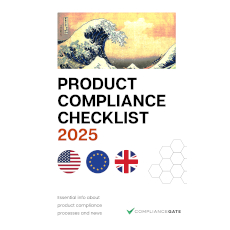
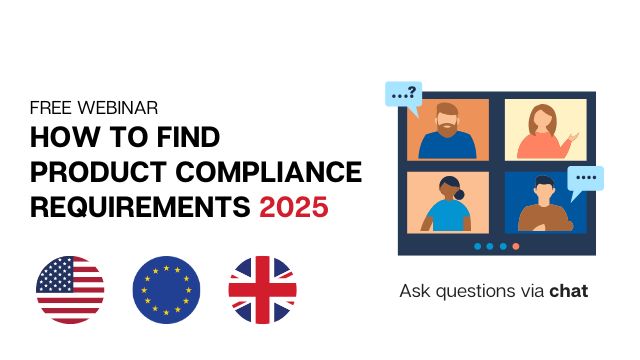
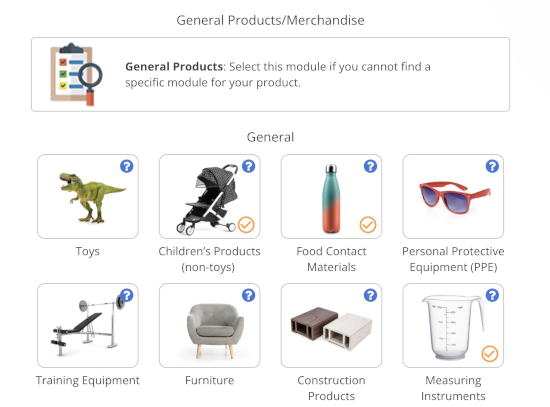










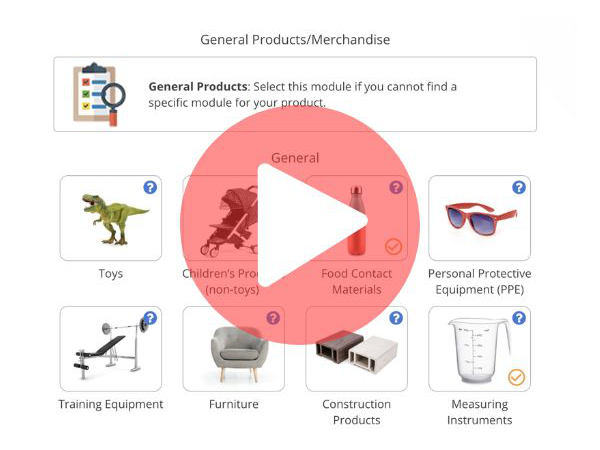
 Create compliance checklists for your product (US, EU & UK)
Create compliance checklists for your product (US, EU & UK) 20+ product certificate templates
20+ product certificate templates Create label files
Create label files Book product testing
Book product testing
What’s the deal with potted plants? Doesn’t list the material just the prop 65 warning.
Profit chasers elevate cost above health and safety. Old fashioned values like duty and honor have vanished. The rich prefer pimping to meaningful social contribution so we the people are expendable.
Vintage Corelle lead content. Also Danske Smooth Flamestone.
The only way to avoid chems is to grow your own food and spin your own cloth from flax or cotton without dye. How did our parents and grand parents live so long
Did they though? That said, I don’t disagree with the general idea that we are exposed to harmful chemicals in both food and consumer products.
why is this warning not in CT. I just ordered furniture and read that my furniture is labeled with this on another site. Now I tried to cancel and getting stuck loosing 320 restocking fee. I am very nervous buying something being a twin bed with kids using this item.
Is there an easy way to find out, in a state other than California, now that companies are not required to list the warning as California does with prop 65 to determine if the product contains any of these dangerous toxins and chemicals?
I have noticed many things in my state do still have the warning, however, others have taken the the warning away.
I do not wish to buy anything with these chemicals in it, and I’m not sure of an effective and efficient way to determine what is contained in products without the warning in my state.
I appreciate any help and advice!
As posted before me, I echo- why are we really allowing this?! (Really, really- golly…) Seems like a no-brainer to me for the entire World’s health, longevity, sustainability…. Sure, I think we used to make buildings with asbestos cheaper previously, too… You know, until it started killing everyone! Bewildered I am, too, indeed.
I got a socket extender from amazon instead of going to the dollar store. Now I am so concerned with this warning, ima seriously considering returning the item. Why sell dangours item to begin with?
I guess there are many reasons. Compliance comes at a cost – both in terms of the materials/hardware and the paperwork around that. Many consumers value low price over safety (including exposure to harmful chemicals).
JUST ORDERED BEDSPREAD WITH PROP 65 HOW SERIOUS IS THIS AND WHY THE HELL DO THEY USE SOMETHING THAT CAN CAUSE CANCER I LIVE IN ARIZONA NEVER KNEW ABOUT THIS LAW
Hi Linda,
Yes, good question. That said, there are many substances that cause cancer. But the fact that it’s labeled doesn’t mean the material is necessarily more “dangerous” than a product without a label.